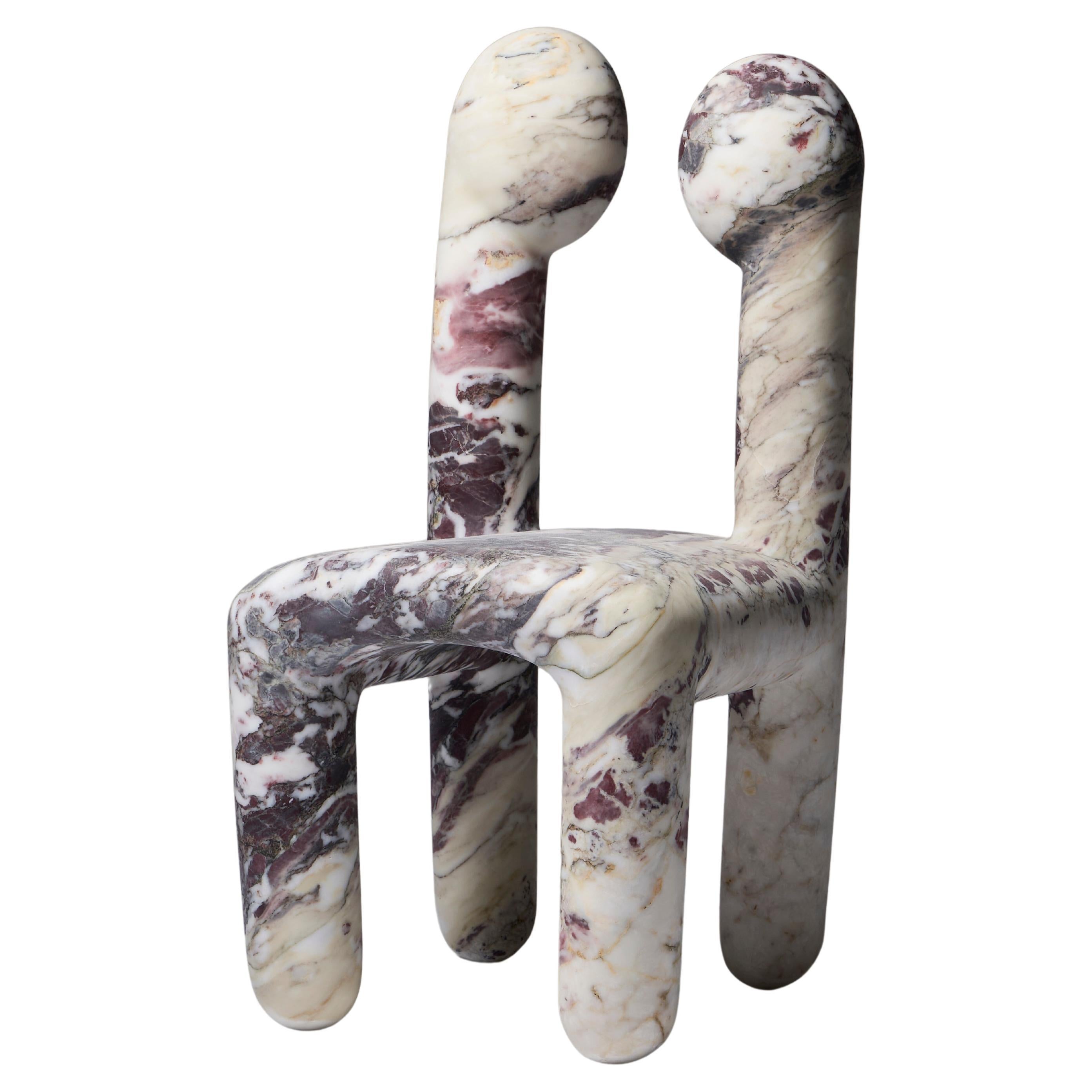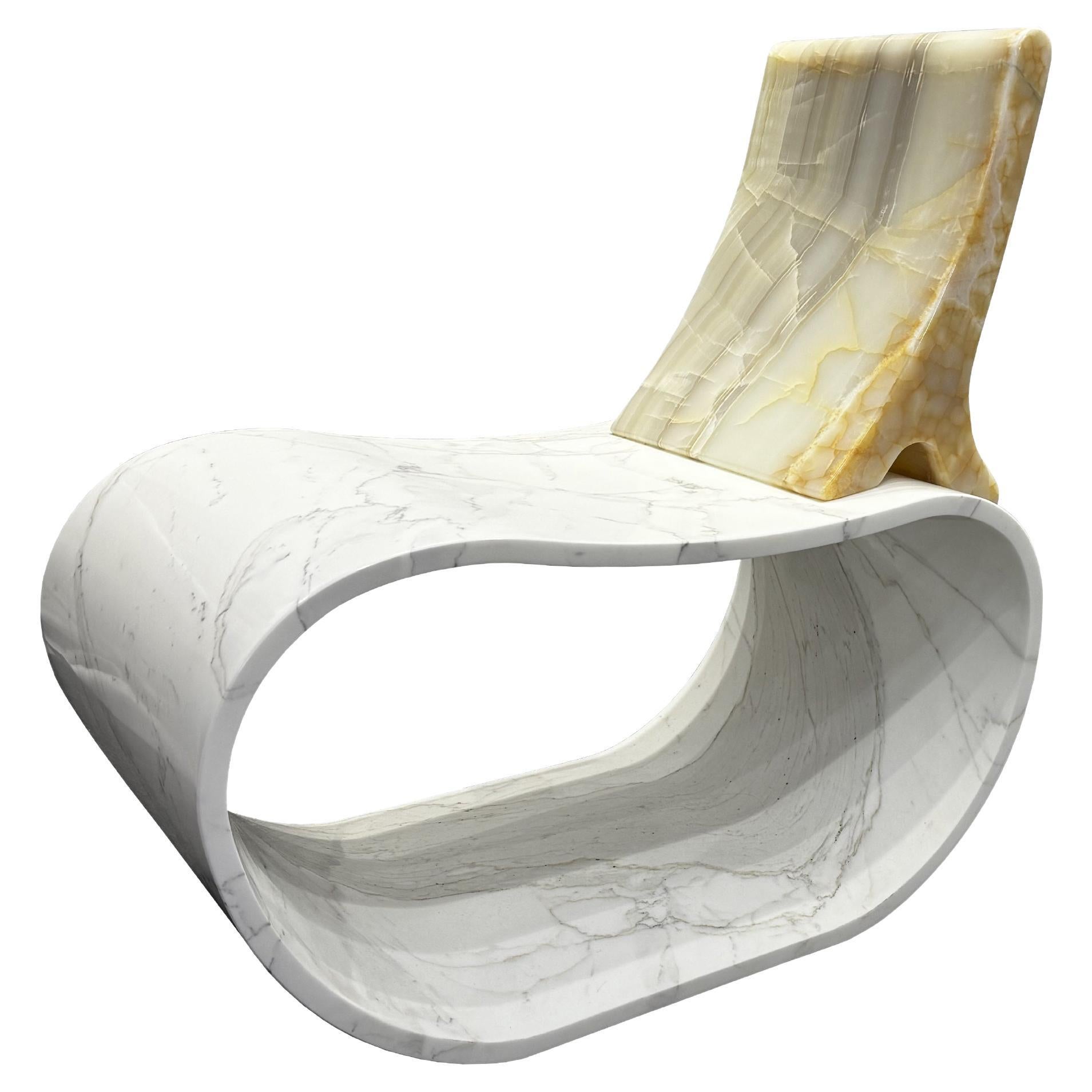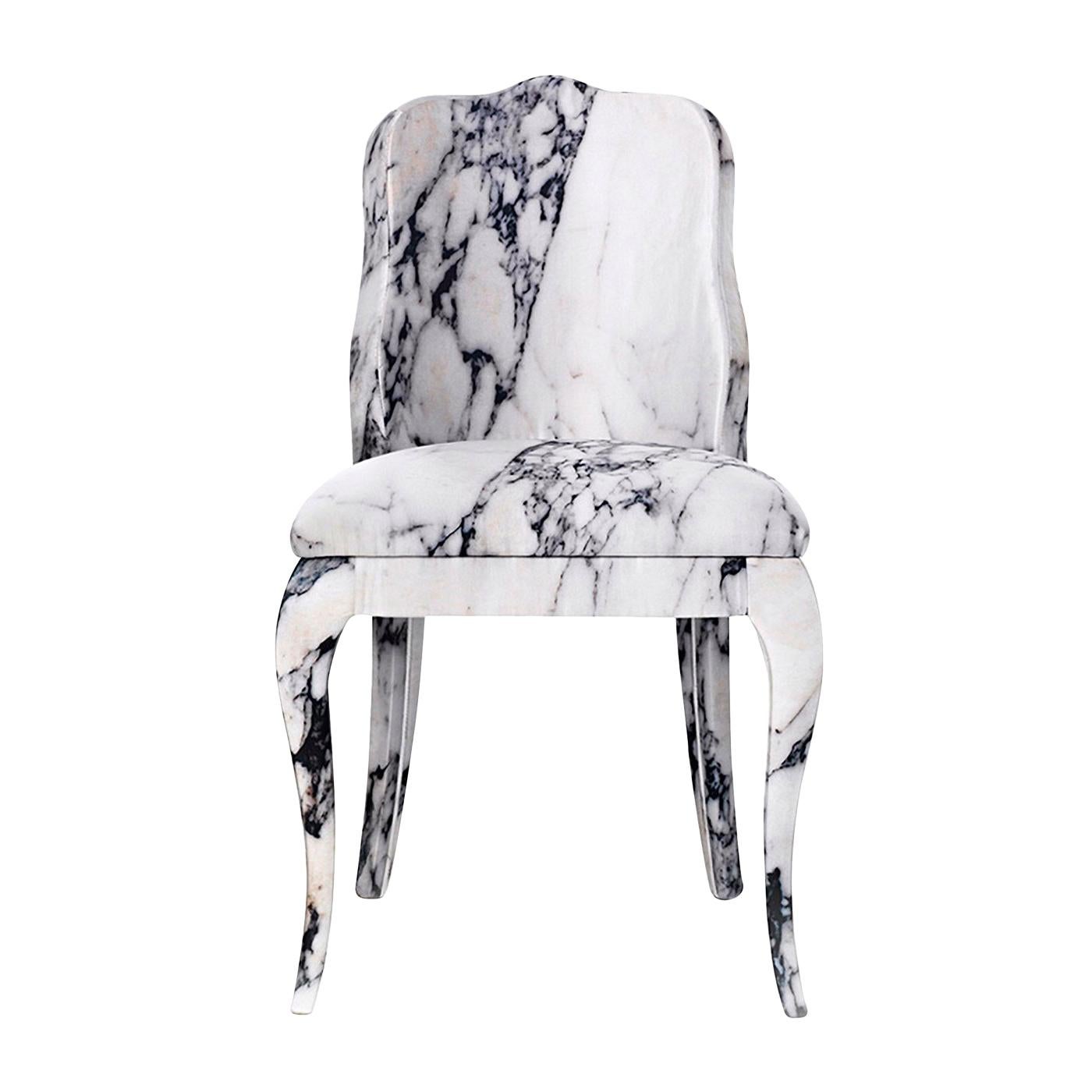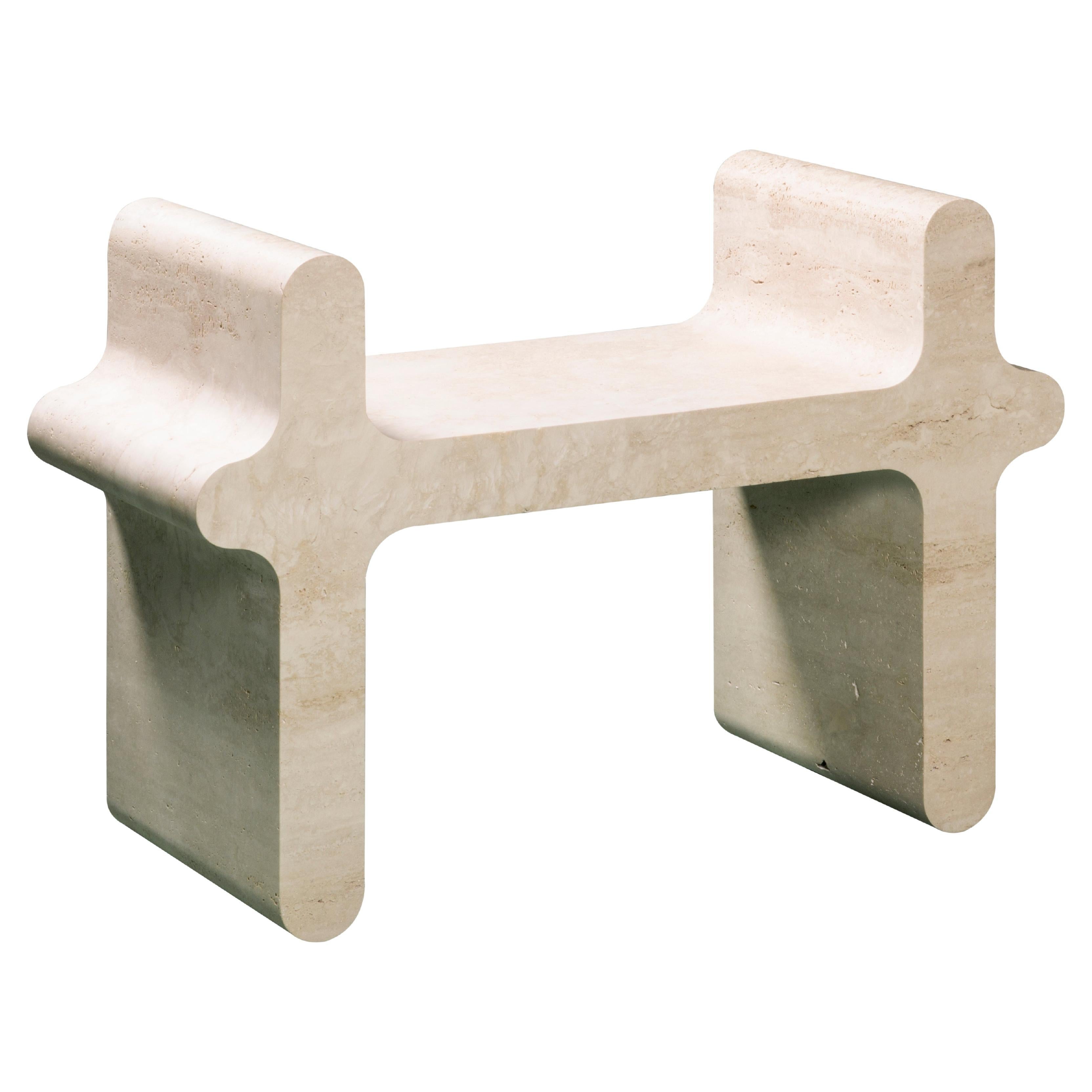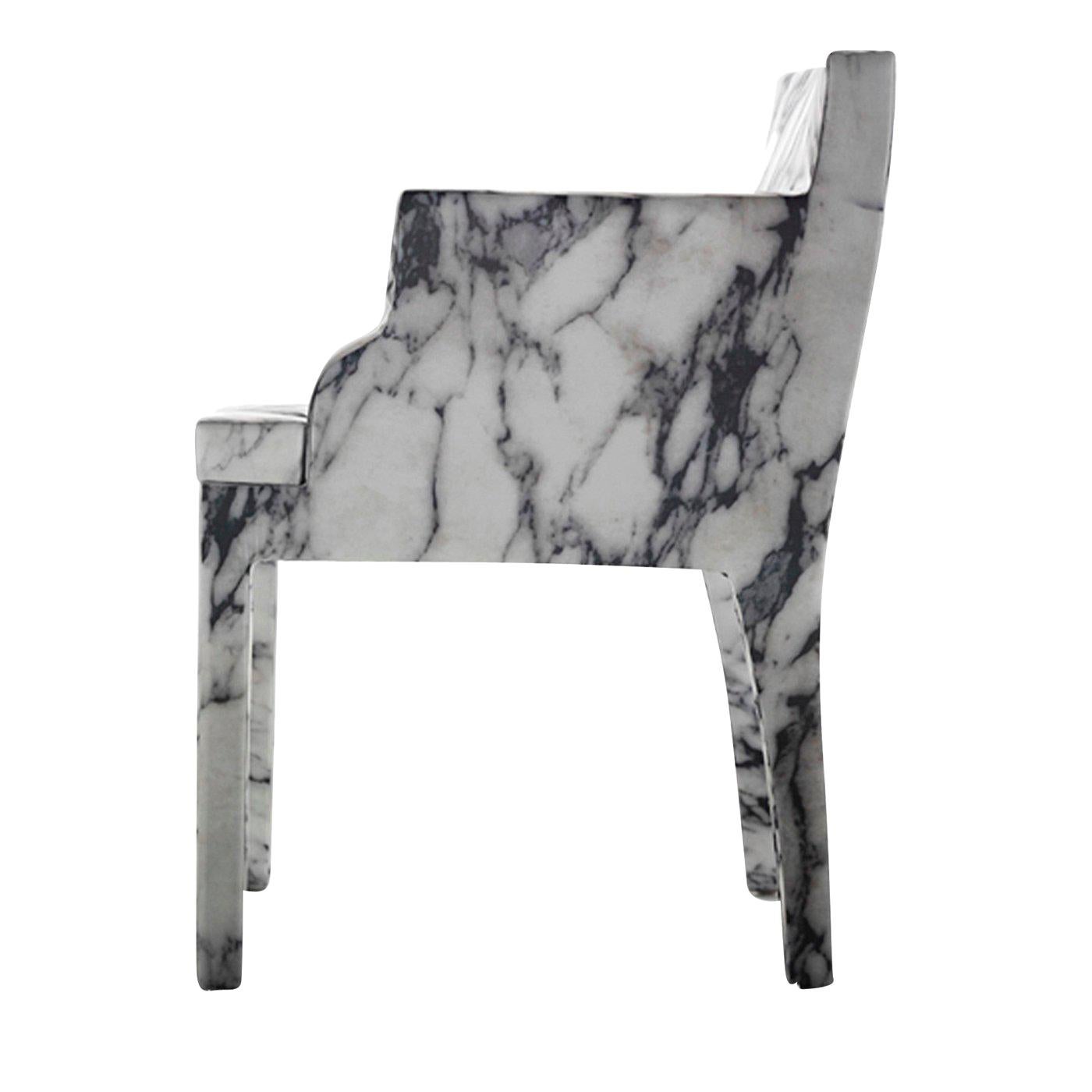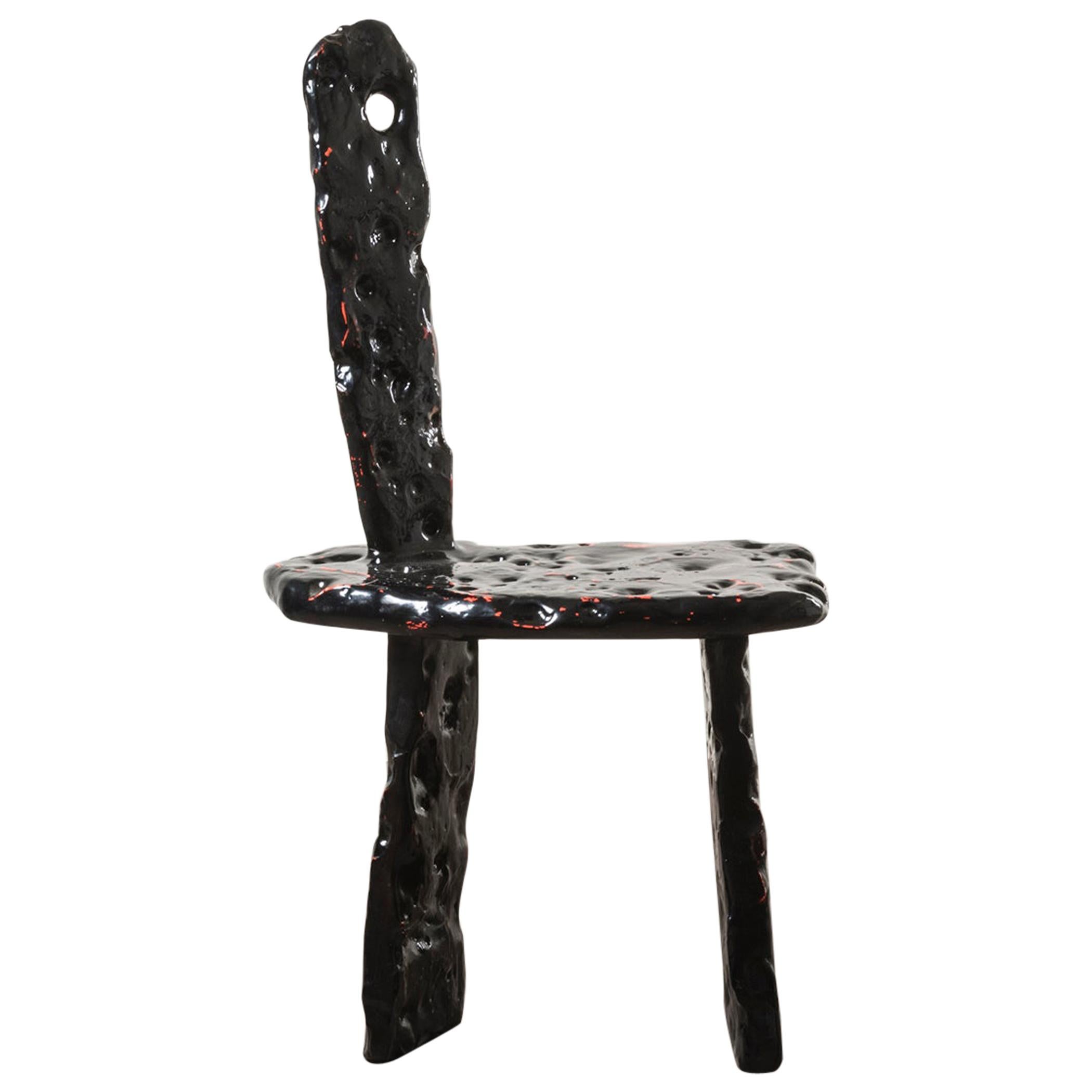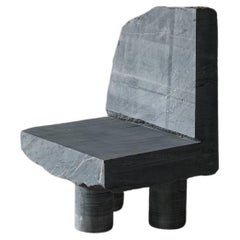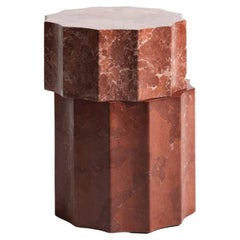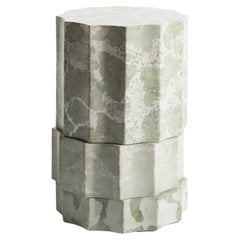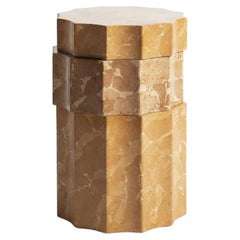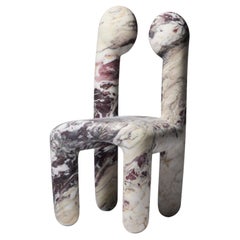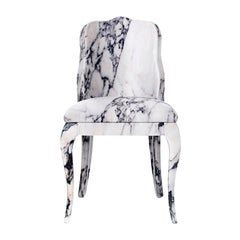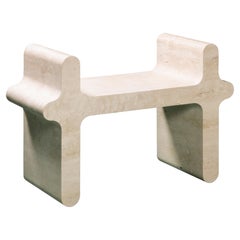Items Similar to Delphi Chair in Marmo di Rima
Want more images or videos?
Request additional images or videos from the seller
1 of 5
Delphi Chair in Marmo di Rima
$15,041.83
£11,136.27
€12,500
CA$20,826.47
A$22,737.52
CHF 11,920.35
MX$276,155.96
NOK 148,865.80
SEK 140,569.01
DKK 95,165.17
About the Item
Ruins by Roberto Sironi is a series of works that re-signify architectural fragments belonging to different historical periods and great archaeological sites, modelling the forms according to new aesthetic representations. The project relates constructive elements of the classical era, such as bases of columns, capitals, sections of an amphitheatre, with rudiments of the industrial era, such as the double-T beams and the reticular structural elements. Roberto Sironi elaborates on the concept of ruins according to a new perspective. Conceived as contemporary ruins, imaginary simulacra and/or programmed artifices – the materials and techniques of execution do not correspond to the original. The work shows how different fragments of architectural remains can be overlaid and re-signified, resetting the temporal distances and suspending the notion time.
- Creator:Roberto Sironi (Designer)
- Dimensions:Height: 25.6 in (65 cm)Diameter: 22.45 in (57 cm)
- Materials and Techniques:
- Place of Origin:
- Period:
- Date of Manufacture:2020
- Production Type:New & Custom(Limited Edition)
- Estimated Production Time:Available Now
- Condition:
- Seller Location:Pireaus-Athens, GR
- Reference Number:1stDibs: LU1571224169582
Different colors available
About the Seller
1.0
Recognized Seller
These prestigious sellers are industry leaders and represent the highest echelon for item quality and design.
Established in 2011
1stDibs seller since 2015
18 sales on 1stDibs
- ShippingRetrieving quote...Shipping from: Athens, Greece
- Return Policy
Authenticity Guarantee
In the unlikely event there’s an issue with an item’s authenticity, contact us within 1 year for a full refund. DetailsMoney-Back Guarantee
If your item is not as described, is damaged in transit, or does not arrive, contact us within 7 days for a full refund. Details24-Hour Cancellation
You have a 24-hour grace period in which to reconsider your purchase, with no questions asked.Vetted Professional Sellers
Our world-class sellers must adhere to strict standards for service and quality, maintaining the integrity of our listings.Price-Match Guarantee
If you find that a seller listed the same item for a lower price elsewhere, we’ll match it.Trusted Global Delivery
Our best-in-class carrier network provides specialized shipping options worldwide, including custom delivery.More From This Seller
View AllIgor Marble Chair by Theodore Psychoyos
Located in Pireaus-Athens, Greece
The idea for a series of functional objects first was born while the artist was building his own home on the island of Naxos. This was the beginning of an ongoing exploration, inspir...
Category
2010s Chairs
Materials
Marble
Domus Pompeii Vettii Stool by Roberto Sironi
By Roberto Sironi
Located in Pireaus-Athens, Greece
Rediscovered in 1748, after being buried for almost two millennia under a blanket of lava and ash following the eruption of Vesuvius, Pompeii redefines our relationship with the past
through its generative potential between reality and imagination.
Defined by Goethe “An incredible place, worthy of peaceful thoughts”, Pompeii has the power to transform inanimate archaeological material into narrative matter, merging past and present in a relationship of reciprocity and interaction.
Exploring the site, today as then, it is possible to admire the interiors decorated with frescoes that reproduce architectural partitions or that tell stories of myths and divinities, in rooms set up with marble elements that the owner used to display his most precious objects.
The Pompeian frescoes were made according to different techniques with colors obtained from earth and minerals such as cinnabar (Pompeian red), ochres (Pompeian yellow), by oxidation processes of metals as in the case of cerulean or by the pulverization of roots and animal bones as in case of greens and blacks.
DOMUS POMPEII is a capsule collection of five side...
Category
2010s Stools
Materials
Marble
Domus Pompeii Fauno Stool by Roberto Sironi
By Roberto Sironi
Located in Pireaus-Athens, Greece
Rediscovered in 1748, after being buried for almost two millennia under a blanket of lava and ash following the eruption of Vesuvius, Pompeii redefines our relationship with the past
through its generative potential between reality and imagination.
Defined by Goethe “An incredible place, worthy of peaceful thoughts”, Pompeii has the power to transform inanimate archaeological material into narrative matter, merging past and present in a relationship of reciprocity and interaction.
Exploring the site, today as then, it is possible to admire the interiors decorated with frescoes that reproduce architectural partitions or that tell stories of myths and divinities, in rooms set up with marble elements that the owner used to display his most precious objects.
The Pompeian frescoes were made according to different techniques with colors obtained from earth and minerals such as cinnabar (Pompeian red), ochres (Pompeian yellow), by oxidation processes of metals as in the case of cerulean or by the pulverization of roots and animal bones as in case of greens and blacks.
DOMUS POMPEII is a capsule collection of five side...
Category
2010s Side Tables
Materials
Marble
Domus Pompeii Dioscuri Stool by Roberto Sironi
By Roberto Sironi
Located in Pireaus-Athens, Greece
Rediscovered in 1748, after being buried for almost two millennia under a blanket of lava and ash following the eruption of Vesuvius, Pompeii redefines our relationship with the past
through its generative potential between reality and imagination.
Defined by Goethe “An incredible place, worthy of peaceful thoughts”, Pompeii has the power to transform inanimate archaeological material into narrative matter, merging past and present in a relationship of reciprocity and interaction.
Exploring the site, today as then, it is possible to admire the interiors decorated with frescoes that reproduce architectural partitions or that tell stories of myths and divinities, in rooms set up with marble elements that the owner used to display his most precious objects.
The Pompeian frescoes were made according to different techniques with colors obtained from earth and minerals such as cinnabar (Pompeian red), ochres (Pompeian yellow), by oxidation processes of metals as in the case of cerulean or by the pulverization of roots and animal bones as in case of greens and blacks.
DOMUS POMPEII is a capsule collection of five side...
Category
2010s Side Tables
Materials
Marble
Domus Pompeii Menandro Stool by Roberto Sironi
By Roberto Sironi
Located in Pireaus-Athens, Greece
Rediscovered in 1748, after being buried for almost two millennia under a blanket of lava and ash following the eruption of Vesuvius, Pompeii redefines our relationship with the past
through its generative potential between reality and imagination.
Defined by Goethe “An incredible place, worthy of peaceful thoughts”, Pompeii has the power to transform inanimate archaeological material into narrative matter, merging past and present in a relationship of reciprocity and interaction.
Exploring the site, today as then, it is possible to admire the interiors decorated with frescoes that reproduce architectural partitions or that tell stories of myths and divinities, in rooms set up with marble elements that the owner used to display his most precious objects.
The Pompeian frescoes were made according to different techniques with colors obtained from earth and minerals such as cinnabar (Pompeian red), ochres (Pompeian yellow), by oxidation processes of metals as in the case of cerulean or by the pulverization of roots and animal bones as in case of greens and blacks.
DOMUS POMPEII is a capsule collection of five side...
Category
2010s Side Tables
Materials
Marble
Domus Pompeii Efebo Stool by Roberto Sironi
By Roberto Sironi
Located in Pireaus-Athens, Greece
Rediscovered in 1748, after being buried for almost two millennia under a blanket of lava and ash following the eruption of Vesuvius, Pompeii redefines our relationship with the past
through its generative potential between reality and imagination.
Defined by Goethe “An incredible place, worthy of peaceful thoughts”, Pompeii has the power to transform inanimate archaeological material into narrative matter, merging past and present in a relationship of reciprocity and interaction.
Exploring the site, today as then, it is possible to admire the interiors decorated with frescoes that reproduce architectural partitions or that tell stories of myths and divinities, in rooms set up with marble elements that the owner used to display his most precious objects.
The Pompeian frescoes were made according to different techniques with colors obtained from earth and minerals such as cinnabar (Pompeian red), ochres (Pompeian yellow), by oxidation processes of metals as in the case of cerulean or by the pulverization of roots and animal bones as in case of greens and blacks.
DOMUS POMPEII is a capsule collection of five side...
Category
2010s Side Tables
Materials
Marble
You May Also Like
Limited Edition Calacatta Viola Marble Urania Chair by Pietro Franceschini
Located in Geneve, CH
Urania chair by Pietro Franceschini
Sold exclusively by Galerie Philia
Limited edition of 8, signed and numbered
Dimensions: H 80 x W 36 x D 36 cm
Seat He...
Category
2010s Italian Modern Chairs
Materials
Marble, Carrara Marble
Marble Seat by Euromarmi Store
Located in Geneve, CH
Marble Seat by Euromarmi Store
Dimensions: D 85 x W 45 x H 61 cm.
Materials: Calacatta marble, Honey Onyx.
Founded by Angela Stiuso, Euromarmi Store was born from the experience and...
Category
2010s Italian Post-Modern Side Chairs
Materials
Marble
$29,325 / item
Luigina Chair by Maurizio Galante e Tal Lancman
By Baleri Italia
Located in Milan, IT
Modern yet with an eye to the past, this chair designed by Maurizio Galante and Tal Lancman is the perfect seating for eclectic and contemporary interiors and also makes for an uncon...
Category
2010s Italian Chairs
Materials
Textile, Polyester, Plywood
$3,410 / item
Chair Marble Francesco Balzano for Giobagnara Ossicle Marble Chair No. 1
By Francesco Balzano
Located in New York, NY
Ossicle Marble Chair No. 1 -- Francesco Balzano x Giobagnara
Available in a marble finish.
For simple and sophisticated leather and marble products, look no further than the Francesco Balzano line. Born and raised in Paris, Francesco Balzano studied interior design and architecture before opening his own studio to design custom and limited editions of furniture pieces for galleries around the world. The influence of Venice, Rome, and Capri are omnipresent in many of Balzano’s products, which fashion simple elegance out of a carefully selected range of leather and marble colors and finishes. The monolithic seats, benches, and tables that comprise Balzano’s ossicle collection strike the perfect balance between organic and pure geometric shapes, thus offering contemporary luxury elevated by minimalism. The singularity of each design conceived as a sculptural piece is bound to stand the test of time.
For nearly twenty years, the Giobagnara brand has combined traditional know-how and leading-edge technology to produce elegance of the highest standard. With luxurious creations available in a unique and virtually limitless color palette of leathers and suede, Giobagnara now boasts one of the most comprehensive offers of leather home accessories...
Category
21st Century and Contemporary Italian Chairs
Materials
Travertine
Louis XV Goes To Sparta Chair by Maurizio Galante and Tal Lancman
By Baleri Italia
Located in Milan, IT
More than a mere revisitation of Classic forms, this chair with armrests transforms a French-inspired design into an original seating where the austere marble becomes unexpectedly so...
Category
2010s Italian Chairs
Materials
Textile, Polyester, Plywood
Original Labi Chair by Alberto Vitelio
By Alberto Vitelio
Located in Milano, Lombardia
Original Labi chair by Alberto Vitelio, Chile, 2019. Nilufar edition. Wood, automotive paint. Measures: 60 x 36 x 110 cm, 23.7 x 14.17 x 43.3 in. Alberto Vitelio comes from several g...
Category
21st Century and Contemporary Chilean Modern Chairs
Materials
Wood, Paint
More Ways To Browse
Italian Rococo Wood Chairs
Liberty And Co Chair
Louis Tapestry Chair
Nobili Medea Chair
Ochre Chair
Pinewood Chair
Red Spanish Chair
Vintage Reed Chairs
1890 Victorian Chairs
1890s Antique Chair
1930 Industrial Chair
Antique Gold Leaf Chair
Capitol Complex Chair
Carved Indian Chair
Chair Leather 70s
Dutch Plastic Chairs
Emilio Ambasz
Mid Century Canvas Folding Chairs
